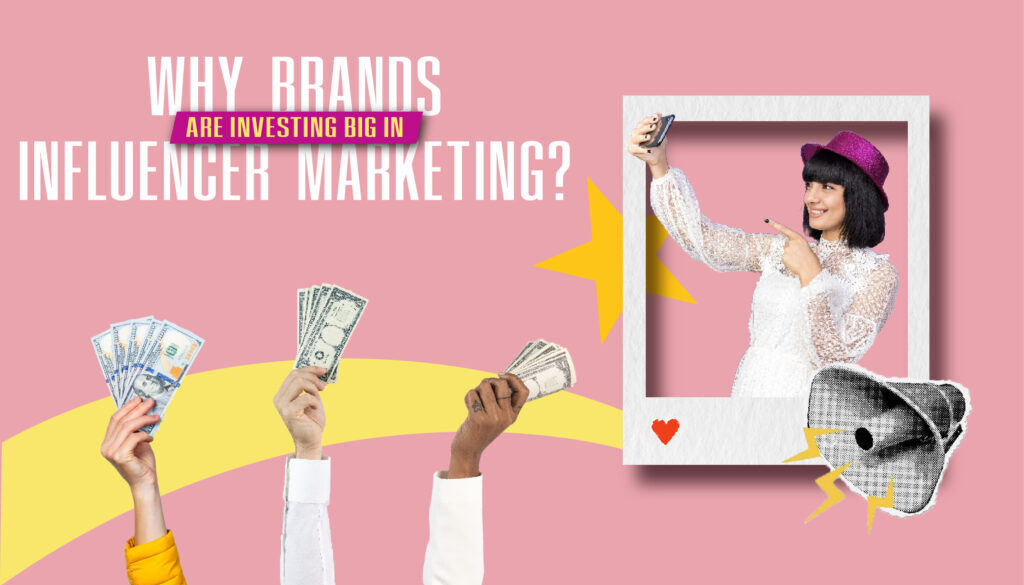Why Brands Are Investing Big in Influencer Marketing
Here’s something interesting:
Did you know that 69% of consumers trust product or service recommendations made by influencers? This statistic alone highlights why influencer marketing has become a powerful tool for brands across industries.
But that’s just the tip of the iceberg. A report by State of Influencer Marketing in India projects that by 2026, sectors like automobiles, e-commerce, and FMCG are expected to increase their influencer marketing investments to a whopping INR 3,375 crore.
India is on the brink of a digital revolution, and the numbers speak volumes. By 2030, there will be 740 million active smartphones in the country, and around 50% of smartphone usage will revolve around social media platforms.
As consumers, we’ve grown sceptical of traditional advertising. Polished TV commercials and print ads often feel distant and contrived. What we crave instead is authenticity, relatability, and genuine connections.
Influencers provide exactly that. Whether it’s an honest product review, a behind-the-scenes glimpse, or a heartfelt story, influencers build trust by being real. They turn brand messages into relatable narratives, forging emotional connections with their audiences.
But how exactly do influencers shape our decisions? And why are brands so eager to invest in this space?
Influencer marketing doesn’t just resonate, it delivers measurable outcomes.
While traditional advertising focuses on mass reach, influencer campaigns are highly targeted, often yielding a higher Return on Investment (ROI). By tapping into niche communities, brands achieve better engagement and conversion rates.
Furthermore, data from Influencer Marketing Hub reveals that for every dollar spent on influencer marketing, brands see an average return of $5.78. This statistic underlines why even small businesses are increasingly leveraging influencers to drive growth.
Success Stories: Real-Life Examples
Sugar Cosmetics:
Their innovative influencer strategies fueled a 75.6% revenue growth in FY22, hitting ₹222 crore. Much of this traction came from e-commerce platforms like Nykaa and Amazon.
The #EveryWomanIsAWonderWoman campaign, launched on Women’s Day, involved 7,000 influencers and garnered 28 million impressions, amplifying a deeply resonant and empowering message.
Mamaearth:
By collaborating with mom bloggers and wellness influencers, Mamaearth positioned itself as a trustworthy brand in the baby-care segment. This led to a 400% growth in sales within three years.
Another major driver behind the influencer marketing boom is its cost-effectiveness.
Traditional advertising be it TV commercials or billboards, comes with hefty price tags that can stretch marketing budgets thin. Influencer campaigns, on the other hand, are scalable and flexible, making them accessible for businesses of all sizes.
Interestingly, 47% of brands now prefer micro and nano influencers for their campaigns. Why? These smaller creators bring higher engagement rates and cost-effective reach, making them ideal for brands targeting specific audiences.
Additionally, the storytelling aspect of influencer content sets it apart. Unlike static advertisements, influencers often create dynamic content, ranging from product tutorials and Q&A sessions to interactive polls and live videos that keeps audiences hooked.
And to my surprise, do you know which platform tops the charts for marketing?
Facebook!
Yes, despite the buzz around newer platforms, Facebook remains the leading platform for marketing campaigns. It’s followed closely by Instagram, YouTube, TikTok, and Twitter, in that order.
Instagram dominates when it comes to visual storytelling, while YouTube serves as a hub for long-form content and product reviews. Emerging platforms like Threads and LinkedIn are also gaining traction for niche audiences, particularly in tech and professional services.
With the rise of AI-driven analytics and personalised marketing, influencer campaigns are set to become even more targeted. Platforms like Meta and TikTok are rolling out advanced tools that allow brands to track ROI and measure campaign effectiveness with greater precision.
By 2026, it’s predicted that social commerce – a fusion of shopping and social media, will drive a significant portion of e-commerce sales in India. Influencers will play a crucial role in this transition, acting as virtual sales representatives for their followers.
Influencer marketing is no longer a trend, it’s a driving force behind the success of brands across industries. With its ability to create authentic connections, boost ROI, and reach targeted audiences, it’s clear why more and more brands are allocating significant resources to this strategy.


